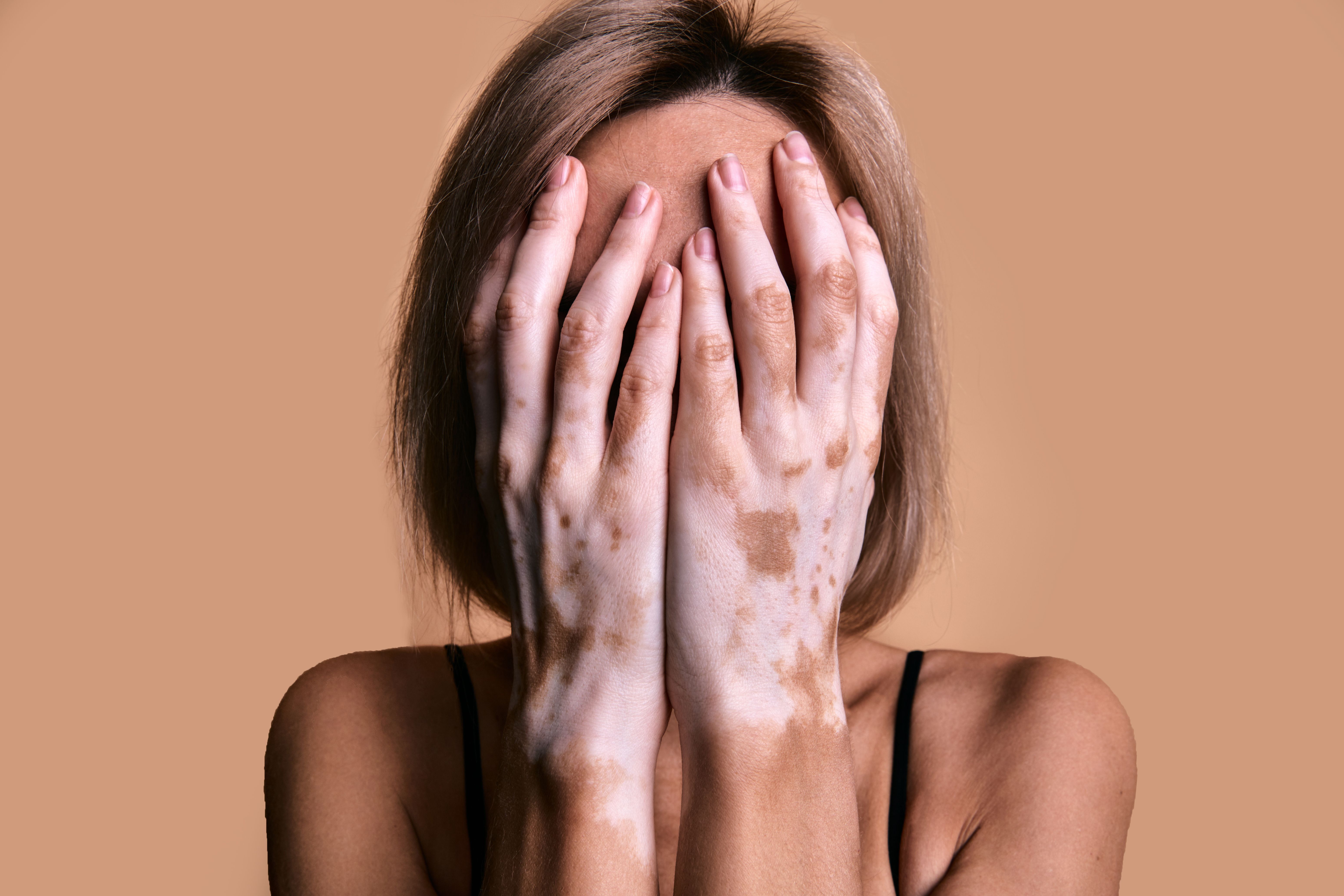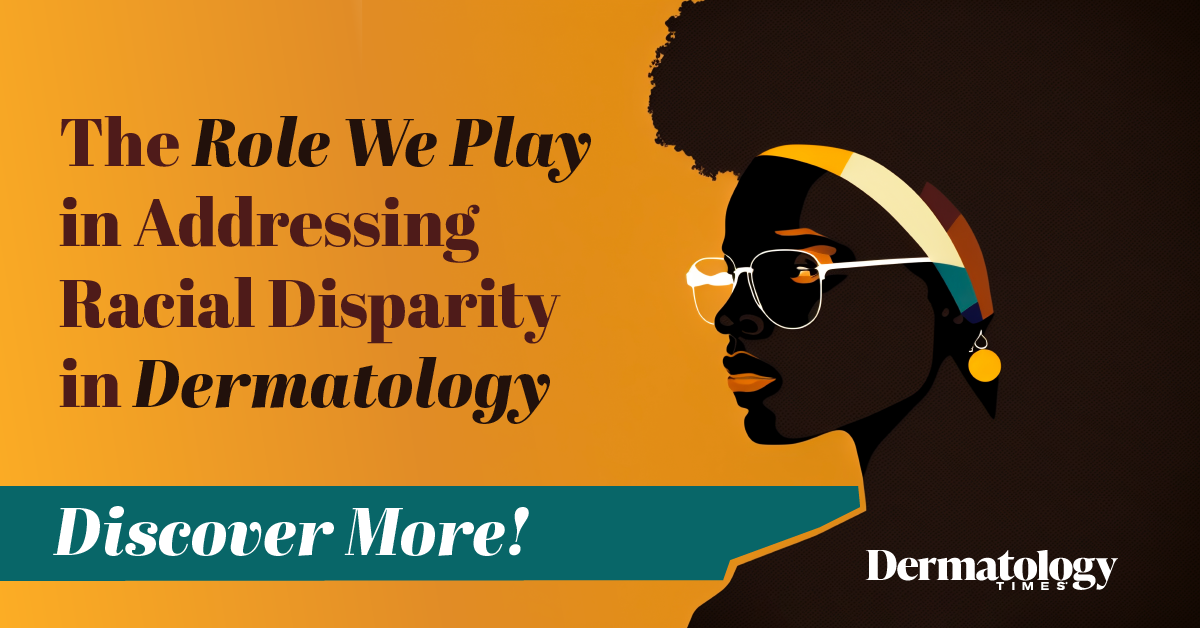- Acne
- Actinic Keratosis
- Aesthetics
- Alopecia
- Atopic Dermatitis
- Buy-and-Bill
- COVID-19
- Case-Based Roundtable
- Chronic Hand Eczema
- Drug Watch
- Eczema
- General Dermatology
- Hidradenitis Suppurativa
- Melasma
- NP and PA
- Pediatric Dermatology
- Pigmentary Disorders
- Practice Management
- Precision Medicine and Biologics
- Prurigo Nodularis
- Psoriasis
- Psoriatic Arthritis
- Rare Disease
- Rosacea
- Skin Cancer
- Vitiligo
- Wound Care
Publication
Article
Dermatology Times
Vitiligo in Different Ethnicities
Author(s):
Clinicians should strive to address the unique medical and aesthetic challenges seen in vitiligo.
Savory/AdobeStock

Although a common sight in the dermatologic practice, the chronic depigmenting skin disorder known as vitiligo is challenging to treat, both from the medical aspect as well as the psychosocial impact that the condition can have in patients, particularly in those individuals with darker Fitzpatrick skin types. As such, clinicians should strive to address the unique medical and aesthetic challenges seen in vitiligo patients of different ethnicities to better treat and manage this patient population.
Characteristically presenting as nonscaly, well-circumscribed, chalky-white macules and patches appearing anywhere on the body, vitiligo affects males and females of all ethnicities without bias and can have a significant impact on patients’ quality of life and self-esteem. Generally thought to be an autoimmune disorder, vitiligo is classified into nonsegmental and segmental subgroups and further into stable and unstable disease.
Medical management goals in patients with vitiligo include repigmentation of vitiliginous areas of the skin and stabilization of the progression of depigmentation. The prognosis of progressive destruction of melanocytes in the skin that will invariably result in the appearance of patchy depigmentation is sobering for any unfortunate patient but can be especially challenging for patients with darker Fitzpatrick skin types.
“Vitiligo is a psychologically devastating disease, and patients with skin of color can be particularly impacted by the skin depigmentation that it causes. The psychological distress and social stigmatization, particularly felt in patients with darker Fitzpatrick skin types, is often formidable, necessitating both effective and compassionate treatment and management counseling from their dermatologist and health care specialists,” said Valerie D. Callender, MD, professor of dermatology at Howard University in Washington DC, president of the American Dermatological Association, and medical director of the Callender Dermatology and Cosmetic Center in Glenn Dale, Maryland.
A complete localized loss of pigment defined as depigmentation is the telltale sign of vitiligo but depending on the presentation, Callender said vitiligo can be challenging to quickly diagnose to the untrained eye. Approximately 10% to 15% of vitiligo patients have segmental vitiligo, where 1 segment of the body is affected, eg, half of the face, 1 arm, or 1 leg; however, 85% to 90% will have the nonsegmental variant. The various forms of nonsegmental vitiligo include confetti-like macules (potentially indicating rapidly progressing vitiligo), trichrome vitiligo (a variant of active vitiligo), and koebnerization, all of which are thought to be clinical signs of unstable vitiligo disease.
Initially, many patients may fear that vitiligo is a contagious disease, can affect the internal organs, and can be cancerous, Callender said. None of the above is true, but patients need to understand their disease better for themselves as well as for their family and social contacts.
“I think that vitiligo is a diagnosis that does not sit well at all with any patient, mostly because it is usually in a visible location such as the face, neck, or back of the hands. It is very difficult for many patients to grasp the fact that they are losing their pigment and for the majority, vitiligo is a diagnosis that patients fear, almost like a skin cancer. As such, we need to be very mindful, compassionate, and supportive to our patients as it can very often be a very psychologically devastating condition for them to bear,” Callender said.
Because of the varying degrees of depigmentation that can occur, some patients may present with hypopigmentation vs depigmentation, and in dermatology, there are several differential diagnoses that clinicians could consider.
According to Callender, the differential diagnoses for hypopigmentation seen on the skin are many and include tinea versicolor, postinflammatory hyperpigmentation, pityriasis alba (a form of atopic dermatitis seen in children), scleroderma, nevus anemicus, nevus depigmentosus, cutaneous T-cell lymphoma, cutaneous sarcoidosis, pityriasis lichenoideschronica, progressive macular hypomelanosis, and idiopathic guttate hypomelanosis, as well as psoriasis and seborrheic dermatitis.
“There are a variety of skin conditions that can present with depigmentation and present with white or light spots,” Callender said. “The key to recognizing vitiligo is when the lesions are completely devoid of melanin and look completely white instead of light as with its differential diagnoses. A Wood’s lamp can quickly help determine whether there is pigment present in the lesion or help rule out or confirm the potential differential diagnoses. However, biopsy with specific histopathological staining techniques is diagnostic and always recommended in questionable cases.”
The treatment and management approach of vitiligo patients with darker Fitzpatrick skin types is more challenging and according to Callender, the challenges are much higher in patients with skin of color, particularly in those individuals with a starker color contrast.
“In patients with darker Fitzpatrick skin types, there is a starker contrast between what’s white and what’s brown, and so it seems to be more challenging both personally and socially for patients with darker skin because of that contrast,” Callender said.
In darker skin, vitiligo lesions are often more difficult to camouflage, which can quickly frustrate patients, and it can be more challenging to find different shades of brown to match a patient’s pigment when using camouflage as a treatment option. According to Callender, there aren’t as many pigments available to camouflage vitiligo areas that contrast, whereas in patients with lighter Fitzpatrick skin types, a number of facial foundations can more easily be employed to help camouflage vitiligo lesions.
Vitiligo lesions can sometimes occur very rapidly and to stabilize the lesions and the process, a more aggressive treatment is likely warranted.
Depending on the variant, a number of treatment options are available to treat vitiligo, including topical corticosteroids, calcineurin inhibitors, vitamin D analogues, oral antioxidants, depigmentation, phototherapy, and surgical treatment, as well as the topical Janus kinase (JAK) inhibitor ruxolitinib 1.5% cream (Opzelura; Incyte), the first FDA-approved drug for vitiligo in adults and children 12 years and older. According to Callender, targeted phototherapy with the 308-nm wavelength excimer laser has also shown to be an excellent treatment option in localized vitiligo lesions.
“In patients with extensive vitiligo who choose depigmentation therapy to depigment their remaining normally pigmented skin, we use the monobenzone of hydroquinone, or Benoquin. We recommend this treatment approach for patients who have generalized vitiligo where it’s better to just depigment the darker area or normal skin to match the vitiliginous skin,” Callender said.
The same medications and treatment modalities can be safely used in the pediatric population as well. Although Opzelura is currently indicated for children 12 years and older and adults, Callender said the novel JAK inhibitor has been used off label in the younger pediatric population as well with very good clinical outcomes.
“All of the therapies we currently have in our armamentarium work well in vitiligo, and it’s up to the discretion of the physician to prescribe what they are comfortable with and what they are used to using. I regularly use all of these agents interchangeably and in combination therapy in my patients with vitiligo with significant success,” Callender said.
Many of the treatment protocols may take 6 months to several years to achieve the desired medical and aesthetic outcome. Nevertheless, Callender said, many patients will have high expectations and want a therapy that clears them up overnight. In addition, certain treatment regimens and protocols may prove difficult for many patients to follow. According to Callender, patients receiving phototherapy will have to visit their dermatologist 2 to 3 times a week for many months to complete therapy, which can be logistically challenging.
“Finding the optimal treatment plan for each patient can be challenging and as such, we have to work closely with our patients and counsel them accordingly toward the best treatment plan going forward,” Callender said. “Patients have to be very dedicated in their treatment plan, which can take a long time and involve multiple treatment sessions and sometimes even address new lesions forming while treating older vitiliginous lesions. Although patients can get disheartened from the chronicity of their condition, the good news is that the treatments we have in our armamentarium work and are improving with continued research. Clinicians just need to make sure their patients are [adherent] and assure them that they are in it to win it,” Callender said.
Different treatment regimens of systemic corticosteroids are used to help control a flare of vitiligo. For rapidly developing vitiligo lesions, a daily treatment course of systemic corticosteroids such as prednisone for 2 weeks or a weekend treatment regimen of systemic dexamethasone 2 mg taken twice on Saturday and twice on Sunday have both been shown to help stabilize the rapid progression of active vitiligo.
“For vitiligo patients of all ethnicities and different skin tones, the treatments we have now are safe and effective,” Callender said. “Along with our medical therapies, dermatologists need to further assist vitiligo patients with camouflaging techniques as well as directing them to join support groups to help them achieve the most positive medical and aesthetic clinical outcomes for their condition.”
Disclosures:
Consultant, Incyte, L’Oréal

Newsletter
Like what you’re reading? Subscribe to Dermatology Times for weekly updates on therapies, innovations, and real-world practice tips.


























